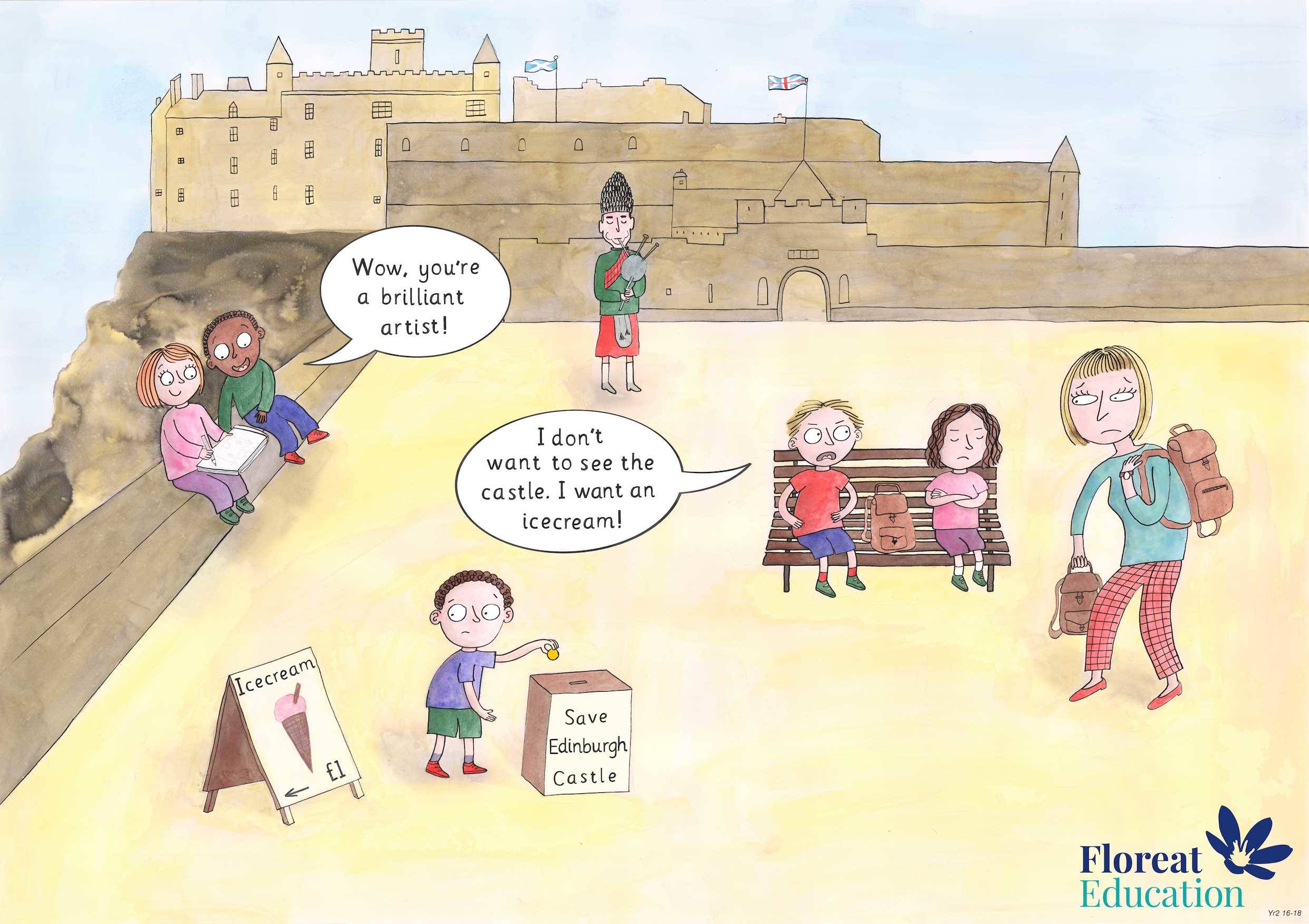Empathy and Perspective
Year 2: Having perspective helps me to appreciate how lucky I am.
Core Story
Did I Ever Tell You How Lucky You Are? by Dr Seuss. Underneath these witty rhymes about unfortunate mishaps lies an important message – there is always someone, somewhere, worse off than ourselves. This book reminds children how lucky they really are, not to be in some of the sticky situations described in this book.

Drawing out the virtue
In this unit pupils are encouraged to understand what is meant by ‘putting things in perspective’. The core story introduces the idea that there is always someone less fortunate than themselves. It gives examples of the perilous and difficult situations in which people find themselves and encourages children to consider how lucky they are.
Building on this theme, the activities guide pupils to consider the difference between ‘want’ and ‘need’. This engages pupils in a discussion about what is truly important. Perspective means understanding that having food and shelter is more important than having a computer or puppy. Thinking about wants and needs in this way helps pupils to recognise just how lucky they are to have the things they do, and that there are people who are less fortunate than themselves. There are strong links to be made with gratitude in this unit. Activity 2 which introduces children to Article 22 of the Universal Declaration on Human Rights follows on from the first activity.
Activity 1: Wants and Needs
The activity here is based on the Robert Kennedy Foundation’s Speak Truth to Power lessons designed for Kindergarten.
Ask the children to sit in a circle and arrange two hoops on the floor in the centre so they are slightly overlapping, like a venn diagram. Have the words ‘want’ and ‘need’ placed inside each hoop. Talk to the pupils about the meanings of those words. Next, hand each pupil a card (see resource Y2 Empathy and Perspective and pupils take turns, one at a time to decide whether the item on their card is something they want, something they need, or something in between. Make links with the knowledge curriculum by concluding that humans’ three basic needs are food, clothing and shelter. The cards will help children to discuss the difference between wants and needs by discussing for example, which category to choose for a winter coat.
Are these the only things we need?
Does everybody have these things?
Does everybody have what they want?
Link this to the story ‘Did I ever tell you how lucky you are’. This is also an opportunity to make a link to gratitude.
Activity 2: Discussing the Declaration
There is a set of rules called Human Rights which says that ‘every person in the world should have their basic needs met – and should have everything they need to live with dignity’. Use the information on the PowerPoint Y2 Empathy and Perspective briefly explain Article 22 of the Universal Declaration on Human Rights to the class. Ask pupils to recall what the three different needs were (food, clothing, shelter).
What would happen if you didn’t have those things? What foods do we need and what foods do we want? Do we always need the same clothes? Why? What kind of shelter do we need? What different types of shelter can you think of?
Is it fair if some people have only the things in the ‘need’ section when others have lots in the ‘want’ section as well?
|
Classroom language
|
Sayings
|
|
You have explained why something is fair/unfair very well and given excellent reasons.
|
|
Library books
My World, Your World by Melanie Walsh
Upside Down Babies by Jeanne Willis and Adrian Reynolds
Me and You by Anthony Browne